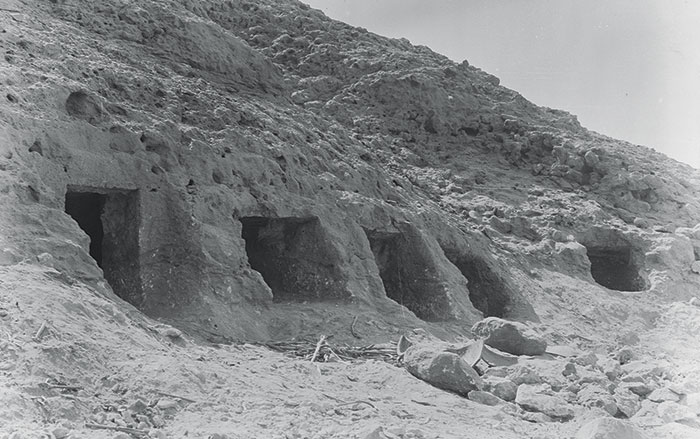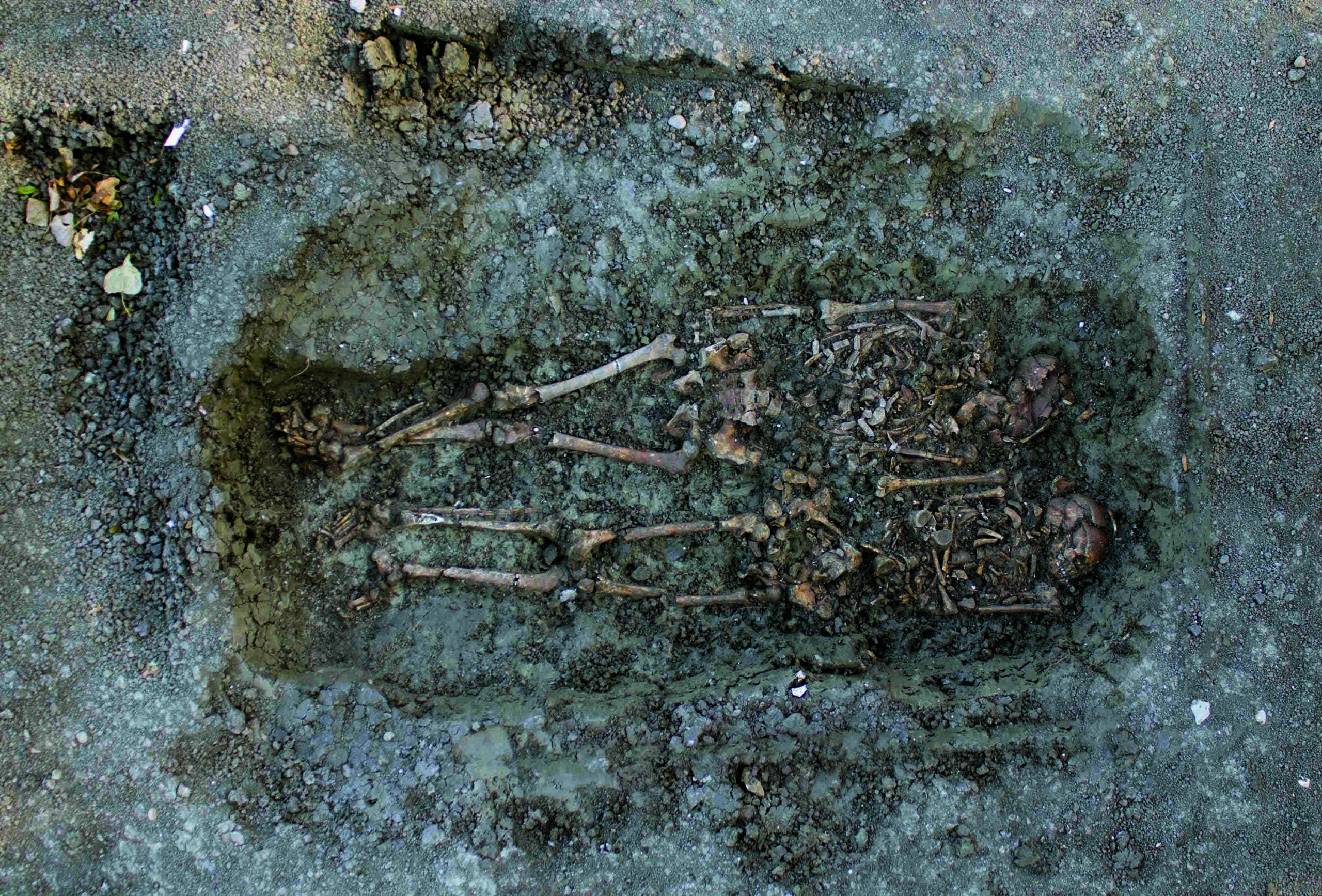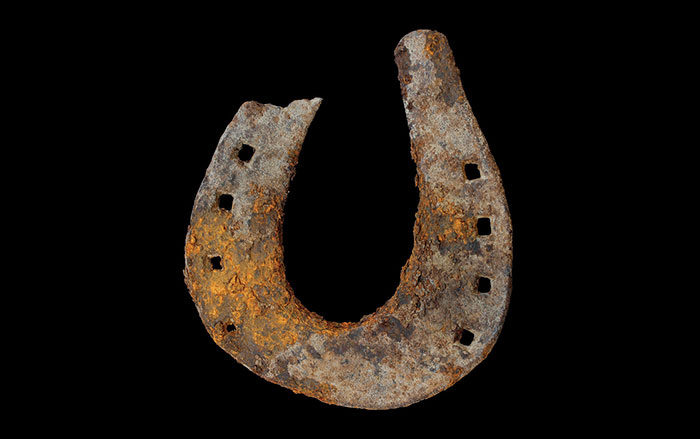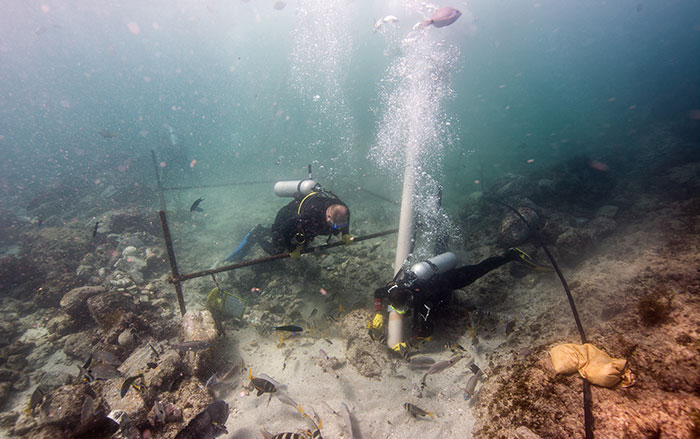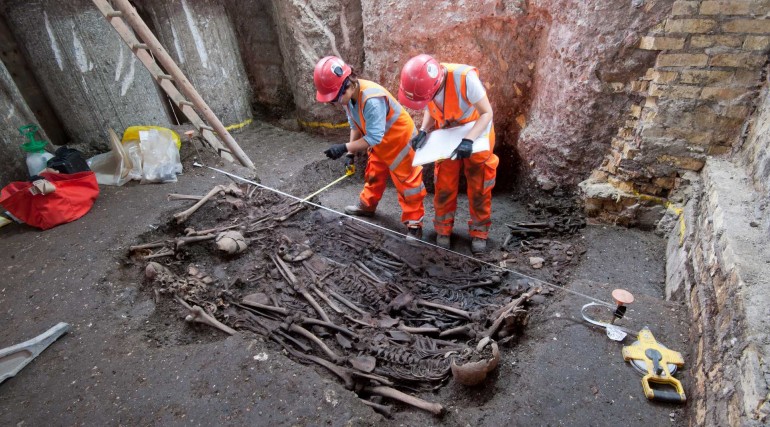
LONDON, ENGLAND—The Independent reports that genetic traces of Yersinia pestis, the bacterium that causes bubonic plague, have been detected in skeletons recovered from an orderly, seventeenth-century burial pit in London’s Bedlam burial ground. No outward evidence of the disease, which kills quickly, was found on the bones, but plague killed more than 100,000 people in London in 1665, so researchers suspected that the possibly 100 people buried in the pit died in the epidemic. Fragments of pottery, glass, and coffin handles in the pit were used to help date it. The remains of the dead were stacked with care in the crowded cemetery, where more than 3,000 people were interred in all. Scientists from the Max Planck Institute in Jena, Germany, will now sequence the recovered Yersinia pestis genome and compare it to pathogens from other historic outbreaks of plague. Further tests on the bones could yield information on the victims’ diets and where they had been born. To read more about London, go to "Haunt of the Resurrection Men."


